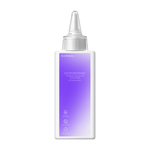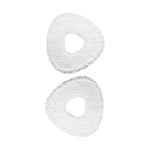A self-contained robot vacuum offers a cleaner, quieter, and more convenient alternative to traditional self-emptying models—without the bulky base or loud emptying noise. If you're wondering which option truly suits your home, this guide lays out the facts.
We’ll start by explaining how self-emptying vacuums work and weigh their main pros and cons, from convenience to cost and maintenance. Then, we’ll help you assess whether they’re worth it for your living space and lifestyle.
Finally, we’ll introduce Narwal’s Self-Contained Dust Collection Technology—a compact solution that combines long-lasting dust storage, hygiene, and quiet performance. You’ll also find links to explore Narwal’s product range and smarter robot vacuum options designed for modern Australian homes.
What Does a Self-Emptying Robot Vacuum Actually Do?
A self-emptying robot vacuum is an advanced smart vacuum that automatically empties dirt and dust from its dustbin into a larger container at its charging base. You don't have to empty the robot vacuum after each cleaning session. It's designed to make the cleaning process more convenient to save you time and effort.
Pros and Cons of Self-Emptying Robot Vacuums
Self-emptying vacuums are packed with convenience, but they come with trade-offs. Here’s a quick overview:
Pros of A Robotic Vacuum Cleaner:
- Convenience: It’s always good to have someone else do the work. Not to mention that you don’t need to empty the dustbin often with a robot vacuum that empties itself. The base station acts as a larger storage. It holds several weeks' worth of dirt and debris, depending on your cleaning frequency. This is particularly beneficial for busy households or those with larger homes.
- Continuous Cleaning: These vacuums can clean larger areas without interruption. Since its dustbin is automatically emptied into the base station, the robot can continue its cleaning cycle without needing to pause. This is ideal for homes with extensive floor space or high foot traffic.
- Hygiene: The sealed bags in the base unit ensure that dust and allergens are contained. When you empty the base, you simply remove the sealed bag and dispose of it. It reduces the risk of allergens being released back into your home. This makes self-emptying robot vacuums a great choice for allergy sufferers.
Cons of A Robotic Vacuum Cleaner:
- Size: The charging base for self-emptying vacuums is typically larger and may take up more space in your home. If you have limited space or prefer a more discreet setup, the larger footprint of the base station could be a drawback.
- Noise: The self-emptying process can be quite loud. When the robot vacuum returns to the base to empty its dustbin, the suction mechanism can create significant noise. This might be disruptive, especially in quiet households or if the vacuum operates during nighttime hours.
- Maintenance: One of the biggest problems of a self-emptying robot vacuum is hair clogging. Many models may encounter this issue during the self-emptying process. This can be troublesome since you might need to disassemble the necessary parts for effective cleaning. Also, you need to clean the inside of the base station regularly; otherwise, bacteria will grow and cause odor. So, this makes disassembling inevitable.
- Cost: Self-emptying models are generally more expensive. The advanced technology and additional components in the base unit contribute to the higher price. While the convenience might justify the cost for some, it's an important factor to consider, especially if you're on a budget.
Is a Self-Emptying Robot Vacuum Worth It?
Whether a self-emptying robot vacuum is worth it depends on your needs and lifestyle. If you have a large home, pets, or allergies, the convenience and hygiene benefits might outweigh the downfalls. However, if you have a smaller space or don't mind emptying the dustbin regularly, a robot vacuum without a self-emptying function might suffice.
Narwal’s Self-Contained Dust Collection Technology Can Be Your Better Choice
Narwal’s Self-Contained Dust Collection Technology is a smarter, quieter alternative to traditional self-emptying systems. It integrates a 1L auto-sealing dust bag directly inside the robot, supported by dust compression technology that stores debris for up to 7 weeks—ideal for low-maintenance households.
The compression system reduces debris volume to maximize capacity without increasing the robot’s size. Built-in sensors monitor dust levels and notify users when the bag needs replacing—eliminating guesswork.

Unlike systems that may release dust during emptying, Narwal’s sealed bag locks in dust and allergens. It also offers a reusable dustbin option, letting users choose between hygienic convenience and eco-conscious cleaning.
To prevent hair clogging, the aerodynamic roller brush minimizes tangles, maintaining consistent performance without frequent cleaning. The integrated auto-drying system keeps the dust compartment dry, preventing odors, bacteria, and mold.
All functions are built into a compact body—no oversized docking station needed. And thanks to its quiet operation, Narwal fits seamlessly into shared spaces or nighttime routines.
Narwal combines dust collection, hygiene, and odor control in one streamlined design—making it a better fit for real-life Australian homes.
[cta:narwal-freo-z-ultra-robotic-vacuum-and-mop-cleaner-clean-before-you-even-notice]
Discover a Better Cleaning Solution with a Self-Contained Robot Vacuum
Whether a self-emptying robot vacuum is worth it really depends on your needs. It can be convenient for larger homes, but it also comes with downsides like noise, size, and maintenance. For most households, a self-contained robot vacuum offers better value with less hassle.
If you're exploring smarter cleaning options for your home, check out Narwal Australia to discover innovative solutions built for real-life needs. You can also learn more about our self-contained robot vacuum models—designed for quieter, cleaner, and more efficient home care.




















































